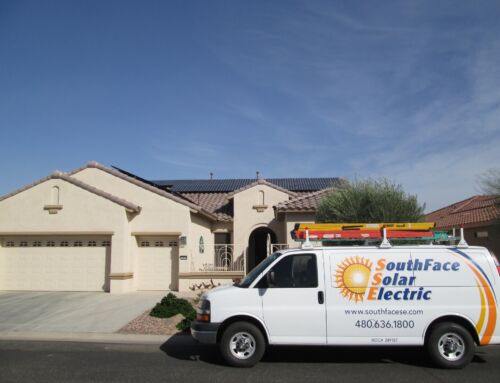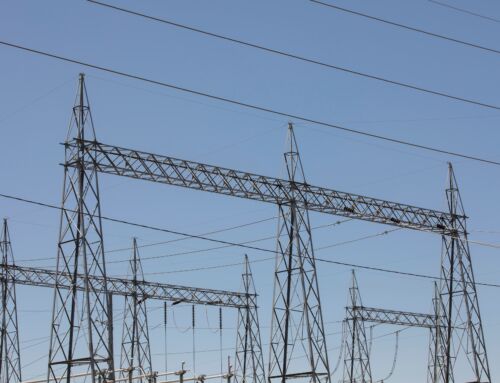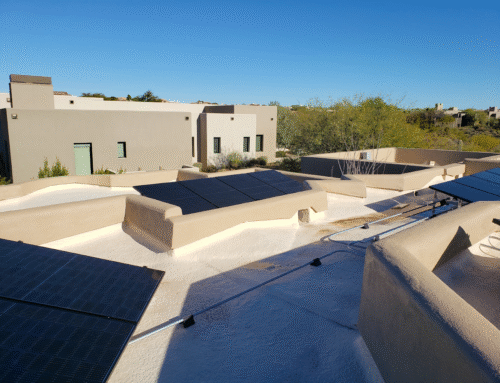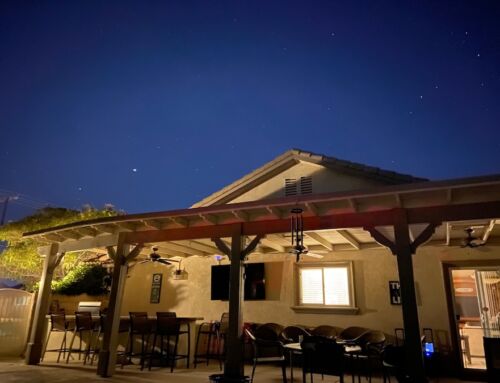What Happens to Your Electric Bill After You Go Solar?
One of the biggest myths about residential solar panels is that they eliminate your electric bill. Solar panels will significantly reduce or even eliminate your electricity usage costs, but you’ll still get a bill from your utility company. It will, however, look different once you go solar.
In this guide, we explain how solar panels work with your electric bill and what your electric bill will look like after you install solar panels.
Do You Still Have an Electric Bill with Solar Panels?
You will still receive an electric bill every month after you install solar panels for your home unless you install an off-grid solar system. Your bill will include charges for any electricity you buy from the grid and delivery fees that all customers pay. It will also detail your net billing credits.
How Net Billing Works in Arizona
Net billing is a solar incentive that compensates solar owners for exporting their surplus solar energy to the electric grid, but at a lower rate than the retail price of electricity. Under a net billing agreement, the excess power your solar panels generate will be automatically exported to the electric grid. Your utility company will credit you for the power you send to the grid. Your credit can then be used to buy grid-generated electricity. When you receive your electric bill every month, you’ll be able to see how much electricity you exported to the grid and the credit you received for it.
How Much Will You Save on Electricity Costs with Solar?
The amount of money you’ll save with solar panels in Arizona depends on several factors, including how much electricity you use, how many solar panels you install, and how sunny your roof is. At SouthFace Solar & Electric, we design custom solar power systems that are intended to cover up to 100% of your electricity usage. However, not every month will be exactly the same, so there are some things to consider: your energy consumption will be higher during certain parts of the year, and your solar output will fluctuate from month to month.
To find out exactly how much you can expect to save, reach out to SouthFace Solar & Electric! We would be happy to provide a free, no-pressure estimate of your solar installation costs and projected savings.
How to Read Your Electric Bill with Solar Panels
Your electric bill after solar panels will look different depending on who your electricity provider is. Let’s look at two real-world examples from Arizona Public Service (APS) and Salt River Project (SRP) to give you an idea of what you can expect.
Example of an APS Electric Bill with Solar Panels

Source: https://www.aps.com/en/Residential/Billing-and-Payment/New-Bill/Renewable-Net-Metering
- Account Information: At the top of your bill, you’ll find standard information about your bill, including your account number, what you owe, and when your payment is due.
- Statement – Every bill shows a monthly statement with detailed information about the current billing period.
- Renewable Energy Insights – This section shows you how much of the electricity you consumed for the month was self-generated and how much was generated by APS.
- Renewable Energy Credit – Here’s where you’ll find your net billing information for the month.
- Monthly Plan Comparison – This section shows you what plan your currently on and recommends changes that could save you money.
- Notices – News and alerts will be listed here when applicable.
- Ways to Pay – There are several ways to pay your bill. You can review your options in this section.
- Payment Stub – If you pay by mail, you’ll need to detach this section and include it with your check.
- Total Paid – This is where you can write in your total amount paid before sending your check, if you pay by mail.
- QR Code – You can scan the code to pay your bill online.
Example of an SRP Electric Bill with Solar Panels
Your SRP electric bill with solar panels will look slightly different depending on the plan you’re enrolled in. This is an example of a solar customer on a Time-of-USe (TOU) Export Price Plan.

Source: https://www.srpnet.com/customer-service/residential-electric/how-to-read-electric-bill#2
- Account Information – At the top of your bill, you’ll find standard information about your bill, including your account number, what you owe, and when your payment is due.
- Account Summary – Below your account information is your account summary. This is an overview of your monthly charges.
- Messages for You – Here you’ll find news and alerts from SRP, when applicable.
- Energy History & Export History – These graphs show up to 36 months of your energy consumption history and your export history (the solar power you’ve sent to the grid.)
- Comparison – This table shows a comparison of your daily usage, daily costs, and average daily temperatures for the current, last and same billing month last year
- Meter Information – This section shows the total energy delivered by SRP, your total on-site solar generation, and the total amount of energy you exported to the grid during the billing period.
Start Your Solar Journey in Arizona with SouthFace Solar & Electric
If you’re fed up with your insane electric bill, it’s time to install solar panels! They’ll save you money now and protect you from future electricity price hikes. SouthFace Solar & Electric is here to guide you through the process of going solar and help you decide whether solar panels are worth it for your home. We’re a local company that’s been installing solar panels in Arizona since 2008 and we can bring more power (and savings!) to you with a custom solar energy system.





